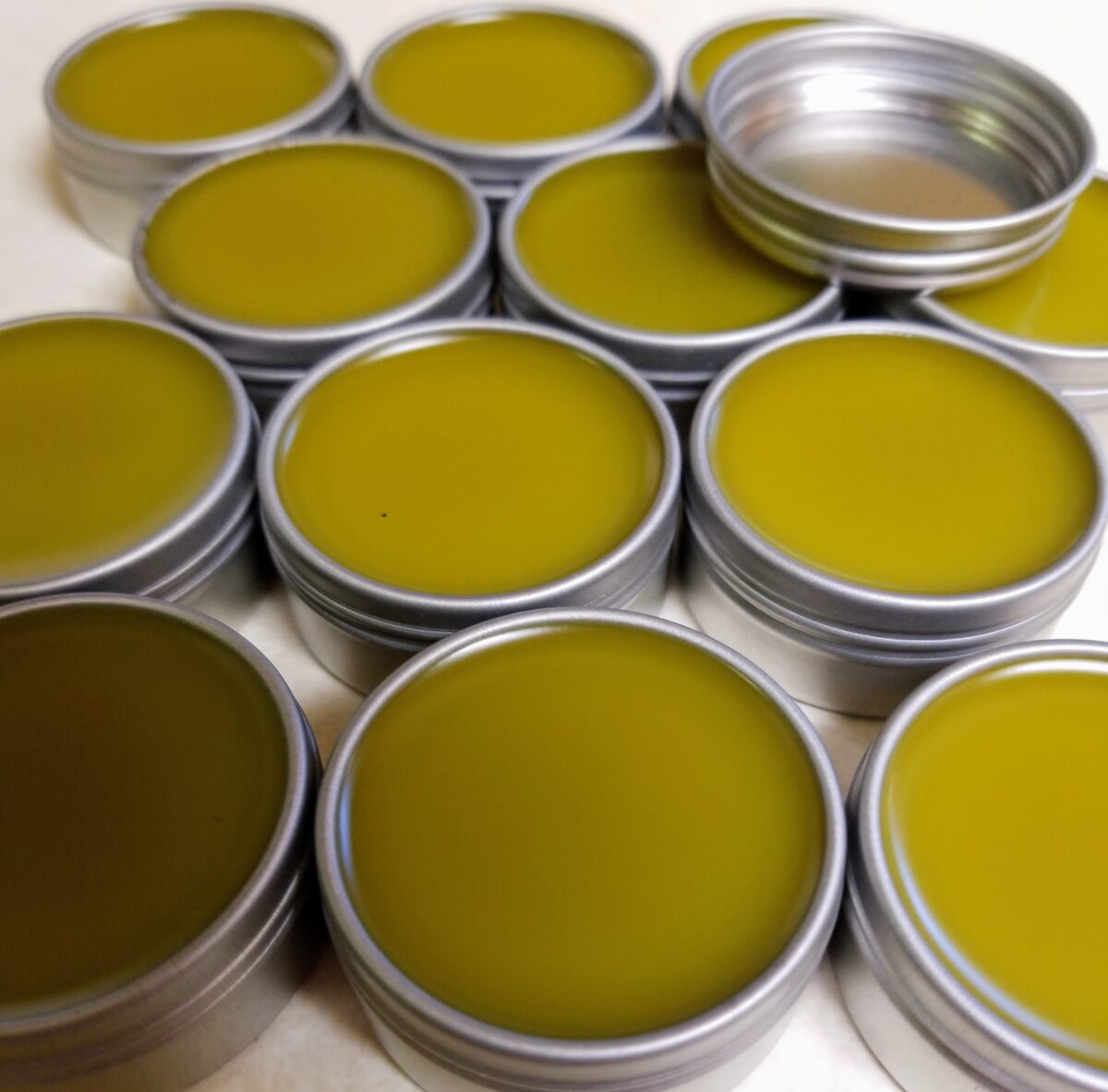While hand washing is essential for personal hygiene and public health, cracked hands can make one vulnerable and more likely to get sick by providing easier access for germs to access our bodies. This salve creates a barrier, protecting the skin after hand washing.
Ingredients and Actions
Lavender (leaves, flowers, & essential oil)
Soothes swelling, irritation, and redness. It also works to prevent infections by killing problematic bacteria, fungus, and disease causing microorganisms.
Pine (resin)
Has antiseptic properties, meaning it protects against or destroys microscopic organisms, bacteria, and viruses that cause infection. This resin, when in a living pine tree, prevents the tree from getting infected when it’s bark is damaged. In this same way, pine resin can also be used to heal our wounds. In addition to being antiseptic, pine sap is also anti-inflammatory and its stickiness helps it close wounds.
Rosemary (leaves)
The anti-inflammatory properties of rosemary extract can help to reduce swelling and puffiness of the skin and rehydrate it. It also helps to heal cracks, soothes the skin, and is antimicrobial.
Sage (leaves)
Sage fights fungi and problematic bacteria and reduces inflammation.
Thyme (leaves)
Thyme has antimicrobial and antifungal properties, meaning it is also effective in treating several types of bacteria and funguses.
Oils and Waxes
These oils and waxes make up the base of the salve (what makes it cream like).
Vitamin E Oil
Vitamin E is an essential nutrient and is a skin moisturizer. It’s also a natural antioxidant and is used as a stabilizer to help the salve last longer.
Beeswax
Beeswax acts to prevent the growth of yeasts and other fungi and helps keep things clean by creating a seal and reducing risk of contamination. This makes it a common ingredient in skin treatments and salves.
Olive Oil and Shea Butter
Both are most commonly used to moisturize skin but also contain many other helpful properties that reduce inflammation, fight the effects of aging on the skin, and prevent skin cancers.
Recognition
We thank the CommonWealth Center for Holistic Herbalism for their podcast episode titled Herbs for Coronavirus Preparedness, which inspired this salve.
References
- Blankespoor, J. (2019). The medicine of pine. Chestnut School of Herbal Medicine.
- Cui, H., Zhang, X., Zhou, H., Zhao, C., & Lin, L. (2015). Antimicrobial activity and mechanisms of Salvia sclarea essential oil. Botanical studies, 56(1), 16. https://doi.org/10.1186/s40529-015-0096-4
- Fraternale, D., Giamperi, L., Bucchini, A. et al. Composition and Antifungal Activity of Essential Oil of Salvia sclarea from Italy. Chem Nat Compd 41, 604–606 (2005). https://doi.org/10.1007/s10600-005-0221-9
- Hunter, J. (2020). 6 almost-forgotten uses for pine tree sap. Primal Survivor.
- Lavender. WebMD.
- Lavender. Healthline.
- Montenegro, L., Pasquinucci, L., Zappalà, A., Chiechio, S., Turnaturi, R., & Parenti, C. (2017). Rosemary Essential Oil-Loaded Lipid Nanoparticles: In Vivo Topical Activity from Gel Vehicles. Pharmaceutics, 9(4), 48. https://doi.org/10.3390/pharmaceutics9040048
- Pahr, K. (2019). 6 Health Benefits of Thyme. ProHealth.
- Puškárová, A., Bučková, M., Kraková, L. et al.The antibacterial and antifungal activity of six essential oils and their cyto/genotoxicity to human HEL 12469 cells.Sci Rep 7, 8211 (2017). https://doi.org/10.1038/s41598-017-08673-9

